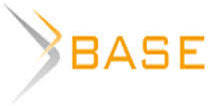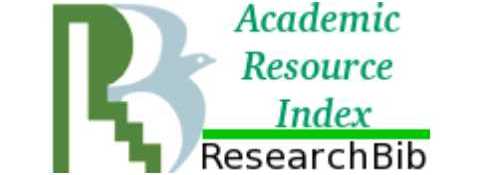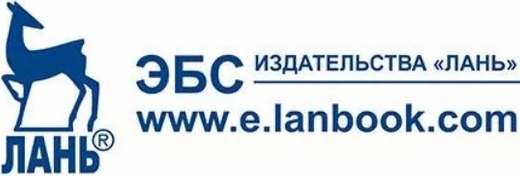Анализ экономической эффективности применения цифровых технологий в энергетических компаниях на основе метода анализа иерархий
Aннотация
В этой статье рассматриваются проблемы, стоящие перед традиционными энергетическими компаниями, и их потенциал для устойчивого роста на основе применения цифровых технологий. В статье представлен литературный обзор последних достижений в области цифровых технологий и их практического применения в энергетической отрасли, включая интеллектуальные сети, Интернет вещей (IoT), большие данные и искусственный интеллект (ИИ). Далее в статье исследуется, как проанализированные технологии могут повысить операционную эффективность, снизить затраты, оптимизировать распределение ресурсов и улучшить качество обслуживания клиентов энергетических предприятий. Предлагаемый в статье подход предполагает формирование комплексной оценки эффективности, основанной на аналитическом иерархическом процессе (Analytic Hierarchy Process, AHP), который учитывает такие факторы, как затраты, выгоды, риски и трудности внедрения технологии. Анализируя различные цифровые решения, такие как интеллектуальные сети, распределенные энергетические системы, анализ данных и интегрированное управление энергопотреблением, авторы предлагают стратегическую основу для выбора наиболее подходящей задачам бизнеса цифровой технологии. Также в статье подчеркивается решающая роль индивидуального подхода при разработке стратегии цифровой трансформации и стимулировании инноваций в энергетическом секторе. Детальное понимание уникального контекста и особенностей каждой компании позволит определить оптимальный набор цифровых технологий, внедрение которых будет способствовать достижению устойчивого роста бизнеса в динамичном энергетическом ландшафте.
Ключевые слова: цифровизация, энергетическая индустрия, экономическая эффективность, комплексная оценка, аналитический иерархический процесс (AHP)
К сожалению, текст статьи доступен только на Английском
Introduction. With the rapid change of science and technology, the wave of digitalization has swept across the world, deeply changing people's lifestyles and work patterns. In this digital revolution, the energy industry, as an important pillar of the national economy, is experiencing unprecedented transformation and upgrading (Teodorescu and Korchagina, 2021). Traditional energy companies are facing multiple challenges such as intensified market competition, increased environmental requirements, and tightening resource constraints, and urgently need to use the power of digital technology to cope with these challenges and achieve sustainable development.
The application of digital technology in the field of energy is not only related to the survival and development of companies, but also an important guarantee for global energy security and sustainable development. Through the application of advanced technologies such as smart grid, big data analysis, Internet of Things, cloud computing, etc., energy enterprises can realize the intelligent management of the whole process of energy production, transmission, distribution and consumption, improve the efficiency of energy utilization, reduce energy consumption and emissions, and promote the development of clean energy (Li et al., 2024). At the same time, digital technology can also help energy companies optimize business processes, improve service levels, improve market competitiveness and achieve business model innovation, and facilitates open, automated communication and real-time operation of the energy system, which is crucial for responding to market dynamics, and competition (Chwiłkowska-Kubala et al., 2023).
The introduction and implementation of digital technology is not an easy task (Korchagina et al., 2019). In the process of digital transformation, energy companies need to face the challenges of technology, management, people, capital and other aspects. How to scientifically assess the cost-effectiveness of digital technology, choose the most suitable technical plan, develop a practical implementation plan to ensure the successful implementation of digital transformation has become a problem that energy enterprises need to solve.
In this research paper, we will construct an evaluation system for the application of digital technology in energy companies, clarify the evaluation objectives and guidelines; according to the analysis of constructing a new evaluation system, we will use the Hierarchical Analysis Method (AHP) and other methods to evaluate and compare the digital technology solutions, and then calculate the relative weight ratio and consistency test to come up with the optimal digitalization program. Through the research and analysis in this paper, we hope to provide useful inspiration and reference for the digital transformation and sustainable development of energy companies.
The aim of the work. The aim of the article is to provide energy companies with a strategic roadmap to select the most appropriate digital technology path, taking into account such factors as costs, benefits, risks and implementation difficulties. The article explores and assesses the transformative potential of digital technologies in the energy sector, with a focus on addressing the challenges faced by traditional energy companies and their quest for sustainable growth. The application of smart grids, Internet of Things (IoT), Big Data and Artificial Intelligence (AI) is explored in depth to examine how these technologies can increase operational efficiency, reduce costs, optimise resource allocation and improve customer experience. Various digital solutions such as smart grids, distributed energy systems, data analytics and integrated energy management are assessed by constructing a comprehensive assessment framework using the Analytical Hierarchy Process (AHP).
Materials and methods. This paper adopts the combination of literature review method, expert survey method and Delphi method. First of all, the literature review, combined with the actual situation of the current development trend of the energy industry, helps to understand the research results and practical experience of previous researchers in the evaluation indicators. Then potential evaluation indexes are found. Generally speaking, the evaluation indicators should follow the following four basic principles: the principle of clarity of purpose and hierarchy; the principle of systematicity and independence; the principle of flexibility and comparability; the principle of simplicity and operability. Further, a collection of evaluation indexes is formed by comprehensive research and generalisation: following the principles of selection of evaluation indexes, the screening indexes which are obviously not applicable to the current energy industry are eliminated; a questionnaire survey is set up for the preliminary selection of indexes, and multiple rounds of anonymous consultation are carried out for the selected group of technical experts; the consultation is repeated many times to determine the degree of recognition and scores, and finally a more consistent and more reliable conclusion or programme is obtained. Finally, a more consistent and reliable conclusion or programme is obtained, and a list of evaluation indicators is formed.
Results and Discussion. Problems of sustainable development of energy companies are of interest to many modern economists (Bianco, Fadeev and Illinsky, 2023; Daniali et al, 2022; Desfonteines et al., 2020; Korchagina et al., 2020; Kotliarov, 2015; Rodionov et al., 2021; Rodionov et al., 2023; Urekeshova et al., 2023). Yang, Xu and He used the technological innovation brought by the Internet of Things and information technology to improve the fine management of old oil fields (Yang, Xu and He, 2024). Wang stated that the introduction of digital technology not only reduces labor costs, but more importantly, improves the accuracy and timeliness of the energy production process (Wang, 2023). Di Silvestre et al. discussed the use of blockchain technology in power systems, highlighting the term "energy blockchain" and its potential applications in the electrical energy sector (Di Silvestre et al., 2020). Maretto, Faccio and Battini stated digitalization is not just about adopting individual technologies, but also about the interconnectedness and integration of technologies that can lead to significant improvements in an industrial setting (Maretto, Faccio, Battini, 2022). Cho, Kim and Lim noted that digitization helps in calculating the levelized cost of electricity (LCOE), which helps in evaluating the financial aspects of renewable energy projects and identifying cost-effective options (Cho, Kim and Lim 2024). Digitisation, particularly through the use of digital twins, offers several benefits to businesses in the energy sector, providing a key element of efficiency, resilience and environmental protection for the energy sector (Ismail et al., 2024). The key elements related to digital development in energy companies in various sources of scientific literature are presented in the table 1.
Table 1
Key Elements Related to Digital development in Energy Companies in various sources of scientific literature
Таблица 1
Ключевые элементы, связанные с цифровым развитием энергетических компаний
в различных источниках научной литературы
Source | Key Elements Related to Digital development in energy companies |
Yang, Xu and He (2024) | Digital Transformation, Data Integration and Application, New Energy + IoT, Cloud Virtualization, Data Networks, SCADA and PLC Systems, B/S and C/S Architectures, System Deployment and Integration, Functionality, Innovation, Edge Computing and Advanced Control, Cost Reduction, Platform Customization, Digital Platforms, Research and Development, Smart oil field and Smart Energy |
Wang (2023) | Policy Support, Accelerated Transformation, Industry Headlines, Automation and Efficiency, Energy Security and Clean Production, Energy Efficiency and Carbon Reduction, Future Outlook |
Di Silvestre et al. (2020) | Smart Grids, Blockchain, Big Data and Analytics, Artificial Intelligence (AI) and Machine Learning (ML), Energy Management Systems (EMS), Digital Platforms and Marketplaces, Cybersecurity, Customer Engagement and Digital Services, Grid Decentralization, Green Energy Certificates and Prosumers, Regulatory and Standards, Skills and Workforce Transformation |
Maretto, Faccio and Battini (2020) | Industry 4.0 plans and international competition, Time and resource constraints, Lack of specific models, Multi-criteria decision-making model, Hierarchical classification of digital technologies, Fuzzy Logic and AHP, KPI-based approach, Case study, Digital technologies, Smart Manufacturing, Working, and Supply Chain, Technologies Evaluation of added value |
Cho et al. (2024) | Smart Grids, Big Data and Analytics, Digital Platforms, Energy Management Systems (EMS), Internet of Things (IoT),Artificial Intelligence (AI) and Machine Learning (ML), Cybersecurity, Digital Business Models, Workforce Transformation, Grid Resilience, Energy Storage and Microgrids, Digital twins, Blockchain |
Ismail et al. (2024). | Energy demand growth, Integration of renewable and non-renewable sources, Digital twins, Challenges, Software and tools |
According to the above screening principles and screening process, combined with the actual industry, the cost-benefit evaluation index system of different digital technology application programs is established as shown in Table 2. The index system shows that, when assessing the cost-effectiveness of different digital technology application programs, companies mainly consider four factorы, such as cost factor B1, benefit factor B2, risk factor B3 and implementation difficulty B4.
Table 2
Index system for evaluating the digital applications program
Таблица 2
Система показателей для оценки программы применения цифровых технологий
Standard of Assessment | The specific classification |
Cost factor | Initial investment costs, operation and maintenance costs, training costs, etc. |
Benefit factor | Improve efficiency, save energy, increase revenue, improve customer satisfaction, etc. |
Risk factor | This includes technology risk, market risk, security risk, etc. |
Implementation difficulty | This includes technical difficulty, employee training, and organizational change. |
Based on the above analysis, the cost-effectiveness of different digital technology application options is mainly classified into implementing smart grid technology (P1), adopting distributed energy system (P2), introducing advanced data analysis tools (P3), and implementing integrated energy management system (P4). In evaluating the cost-effectiveness of different digital technology application options using the AHP method, the elements involved in these evaluation index systems are arranged hierarchically, respectively, to create a hierarchy of fully relevant objectives. The top layer is the goal, usually there is only one target that is the digital technology application program A: the middle is the criterion, that is, for the influence of digital technology application program selection of specific indicators factors B: the lower layer is the Alternative, that is, for the digital technology application program P as shown in Figure 1.
Fig. 1. Hierarchy Model for Digital Technology Application Program Selection
Рис. 1. Иерархическая модель выбора программы цифровых технологий
Among them, in the first two layers, A is the goal of the subsystem, B1-B4 are the influence factors of the subsystem, and the corresponding judgment matrix of this subsystem is a 4-order square matrix; in the last two layers to B1, for example, B1 is the goal of the subsystem, P1-P4 is the influence factors of the subsystem, and the corresponding judgment matrix of this system is an n-order square matrix (An and Hou, 2021).
The Hierarchical Analysis Method (Analytic Hierarchy Process, abbreviated as AHP) is a practical single-objective multi-factor hierarchical weight decision-making method proposed by T.L. Satty, a professor of operations research and mathematics, 1970 (Agyekum et al., 2021). The method systematically and succinctly decomposes a complex target into multiple factors through a hierarchical structure, compares the factors of each level with each other, quantifies the expert's judgment criteria with relative scales, constructs judgment matrices on this basis, and then calculates the weights of the matrices, and then ranks the results of the calculations, which provides a basis for the final decision-making hierarchical ordering. The biggest advantage of AHP is that it can combine quantitative parameters with qualitative factors to deal with the problem, and it can quantify the qualitative factors by introducing the subjective thinking of the evaluator into the evaluation index model, and it can be tested and adjusted by consistency test to check and adjust the transferring error between the comparison of factors. However, people through the study found that it also has some limitations, including only in the evaluation of the specified several indicators to choose the best item: there must be a scientific system of comparison of indicators and factors, that is, expert evaluation, as a pre-processing support, otherwise, the conclusions are biased; must ensure that consistency test is passed, otherwise the conclusions are invalid.
Based on the Hierarchical Analysis Method, the weighting coefficients of the steps in Figure 2 are used to identify the different digital application technologies of the cost-effectiveness evaluation programme.
Fig. 2. Hierarchical Analysis AHP Process Diagram
Рис. 2. Диаграмма процесса иерархического анализа по методу AHP
Hierarchical analysis generally uses a 1-9 scale of the relative importance comparison scale (see Table 3) to assign the importance of the same level of factors, this paper also invokes the Delphi method, the factors of each level of two-to-two comparison, the integrated quantitative factors given the number of scales, i.e., indicators of the degree of relative importance.
Table 3
The relative importance comparison scale
Таблица 3
Сравнительная шкала относительной важности
Scale | Definition | Explanation |
1 | Equally important | Two elements contribute equally to the objective |
3 | Moderate important | Experience and judgment slightly favor one element over another |
5 | Strong important | Experience and judgment strongly favor one element over another |
7 | Very strong important | One element is favored very strongly over another, its dominance is demonstrated in practice |
9 | Extreme important | The evidence favoring one element over another is of the highest possible order of affirmation |
2,4,6,8 | Intermediate values | The above compromise between two neighboring scale |
The reciprocal of each of the above numbers | Inverse comparison | If elements i and j are compared to each other with judgment matrix a, then element j is compared to element i with judgment matrix 1/a |
Accordingly, from the next level to the previous level, the last level B1,B2…Bn is n evaluation indicator factors, each indicator factor and the same level of the importance of the rest of the indicators between the factors, constituting p contains weight ratio of n-order matrix, that is, for the judgment matrix, set as .
First of all, the judgment matrix is normalized, that is, the sum of the elements of each column of the judgment matrix is 1, and the purpose of this is to turn the data into a decimal number between (0.1). After the transformation, it is transformed into a dimensionless expression. The goal of the AHP method is to determine the order of relative importance between n indicators, i.e., the weight of the indicators, the calculation of the weight needs to calculate the eigenroot, the maximum eigenroot value, and finally get the consistency index C.I. value, which is used in the next step of consistency test. Usually, the maximum eigenvalue and eigenvector can be solved by approximation methods such as the square root method and the sum product method, among which, the square root method is more suitable for comprehensive evaluation of suppliers. The calculation process is as follows:
Firstly, the consistency of the judgment matrix is tested to ensure the consistency of the expert judgment. According to the maximum characteristic root of the judgment matrix, the consistency index C.I. value is calculated by using formula (6):
Among them, n is the order of the judgment matrix. When C.I.=0, the matrix has complete consistency: the closer C.I. is to 0, the more satisfactory the matrix consistency is. Usually, as long as C.I. ≤ 0.1, it proves that the judgment matrix has good consistency. Otherwise, a correction value R.I. needs to be introduced to correct C.I., so that the correction value is as shown in Equation (7):
The corresponding average randomized consistency index R.I. is determined from Table 4 based on the order n.
Table 4
Average Randomized Consistency Indicator R.I.
Таблица 4
Средний рандомизированный показатель согласованности R.I.
Matrix order | 1 | 2 | 3 | 4 | 5 | 6 | 7 | 8 | 9 | 10 |
R.I. | 0 | 0 | 0.52 | 0.89 | 1.12 | 1.26 | 1.36 | 1.14 | 1.46 | 1.49 |
When C.R. < 0.1, it indicates that the degree of consistency of the judgment matrix is within the acceptable range and the weight coefficients are correctly assigned, otherwise, it is necessary to re-judge the relative importance of the elements between the levels until the consistency test is passed.
Conclusion. Appropriate digital technology solutions will often reduce the cost-effectiveness of energy enterprises, so that enterprises can obtain maximum benefits with minimum investment. When choosing a digital technology program, companies need to consider a number of cost-benefit factors, including enterprise costs, benefits, risks, implementation difficulties, etc. The above only provides a discussion of how to choose a suitable digital technology solution. The above only provides a discussion of how to choose the right digital technology programs for energy companies, but in reality, each factor has a different degree of influence on the correct choice of digital application technology candidates for each enterprise. Therefore, it is necessary to consider the company's own situation, hire experienced experts in the industry and communicate with the company's relevant personnel to determine the personalized selection indexes, and focus on the selection indexes.
In this paper, based on the cost factor, benefit factor, risk factor and implementation difficulty evaluation index, we establish a model to evaluate the cost and benefit of digital technology in energy companies, and analyze how to choose a suitable digital technology application plan according to their own situation based on the hierarchical analysis method. According to the analysis of the new evaluation system, the optimal digitalization scheme is derived by calculating the relative weight ratio and consistency test, which provides an effective reference for the scientific decision-making of energy companies and has certain practical significance. However, energy enterprises should adjust the indicators and refine them according to the actual situation, so as to make the evaluation and decision-making process more reasonable and objective.
















Список литературы
Список использованной литературы появится позже.